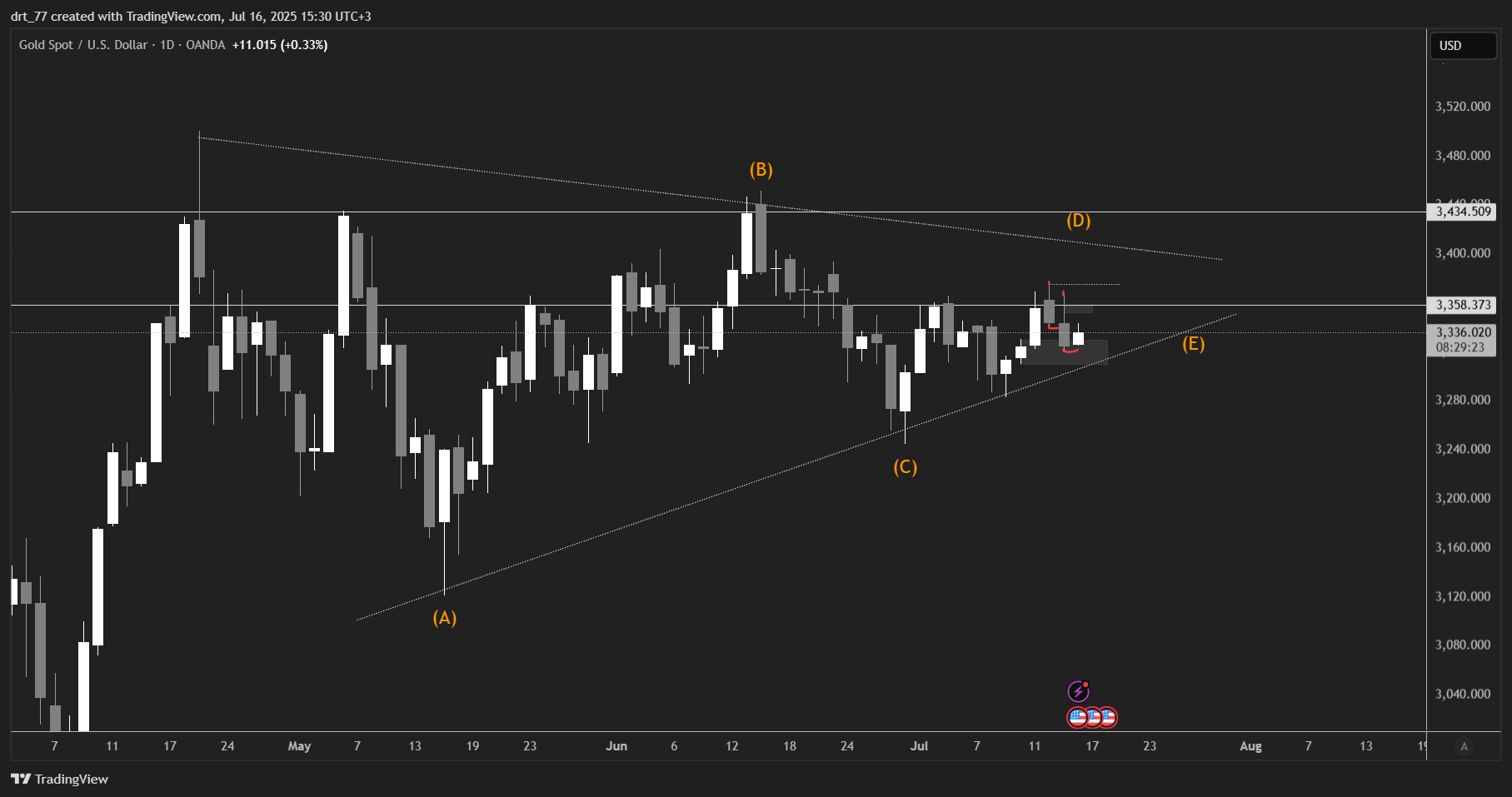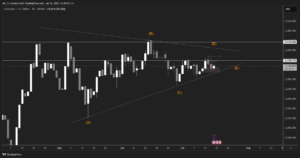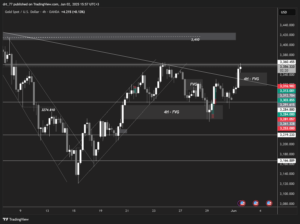Breaking News: Gold Breaks Previous Records, Reaching All-Time Highs
Global gold prices have reached an all-time high during Tuesday’s trading as investors flock to safe-haven assets, driven by expectations that the Federal Reserve will cut interest rates next month.
This comes as the final reading of the Eurozone Consumer Price Index was released, showing data in line with market expectations. Annual inflation reached 2.6% in July, consistent with forecasts, compared to the previous reading of 2.5% in June.
On a monthly basis, inflation saw no increase in July, as expected by experts, while the previous reading showed a 0.2% rise.
During the same period, the core Consumer Price Index recorded a 2.9% annual increase in July, matching both market expectations and the previous reading of 2.9%.
Spot gold rose by 0.7% to $2,525 per ounce, surpassing the previous record set on Friday.
Meanwhile, U.S. gold futures climbed by 0.8% to $2,563.
China to Resume Purchases
Gold traders are once again focusing on the potential for lower U.S. interest rates, attracting Western safe-haven seekers, as evident from recent inflows.
Given the weak Chinese economy and ongoing geopolitical tensions surrounding China, there is a very high likelihood of their resuming gold purchases sooner rather than later. Currently, there is a 12-month price target of $2,600 per ounce, with the central bank being one of the major drivers of gold prices in recent periods.
Breaking News: A Fed Hawk Changes His Stance Due to Unemployment Rate… and Important Statements
Minneapolis Fed President Neel Kashkari stated that the weakness in the labor market is pushing the Federal Reserve to consider cutting rates in the upcoming meeting.
Kashkari, a member of the Federal Reserve committee, spoke in an interview with The Wall Street Journal about current risks, which are driving his shift in monetary policy stance. Kashkari had previously been in favor of keeping rates unchanged throughout 2024. However, the rise in unemployment from 3.7% to 4.3% has increased the risks of economic slowdown, leading him to change his stance.
Despite this, the Minneapolis Fed president expressed caution about the extent of potential rate cuts, stating that he does not see a reason for cutting rates by more than a quarter percentage point at this time, given that layoffs remain low and unemployment claims do not indicate significant deterioration.
“If we see some rapid deterioration in the labor market, that would tell me: ‘Okay, we need to do more, and quickly, to support the labor market, even if we have uncertainty about our final destination,'” Kashkari told The Wall Street Journal.
Until inflation reached its highest level in four decades in 2022, Kashkari was one of the most dovish Federal Reserve officials, prioritizing the labor market over inflation concerns. However, in recent years, he has become one of the more hawkish voices, showing greater concern over inflation risks.
The Fed official remains unconvinced that current interest rate levels are as restrictive as some have suggested. He pointed to the low number of layoffs and the resilience of the housing sector as indicators. Nevertheless, he acknowledged that this does not necessarily justify keeping rates unchanged.
Considering Rate Cuts
San Francisco Federal Reserve President Mary Daly made similar comments in an interview with the Financial Times published on Sunday, stating that it is time to consider cutting rates from the current range of 5.25% to 5.5%.
Daly told the newspaper, “A gradual adjustment of rates is neither weakness, nor slow, nor delayed; it’s simply wisdom,” adding that while the labor market has slowed, “it is not weak.” The San Francisco Fed president believes the central bank should take a gradual approach to reducing borrowing costs.
Daly also noted that recent economic data has given her more confidence that inflation is under control and that the time has come to adjust borrowing costs from their current levels.
In remarks earlier this month, she stated that it is too early to determine whether July’s jobs report signals a slowdown or genuine weakness, but she warned that it is “critical” to prevent the labor market from slipping into a recession. She expressed “more confidence” that inflation is trending towards the 2% target.
Federal Reserve Chairman Jerome Powell is scheduled to deliver remarks on the economic outlook on Friday, the first full day of the Kansas City Fed’s annual economic symposium in Jackson Hole, Wyoming.
Oil Marginally Declines as Brent Remains Below $80—What’s Impacting Oil Movements?
Oil prices declined during Monday’s trading, marking the second consecutive day of losses, with Brent crude continuing to trade below $80 per barrel. This comes after it touched its lowest level since August 9 for the second session, as investors remain concerned about oil demand levels in China, the world’s largest crude importer, following highly negative data last week.
Nevertheless, oil losses remained marginal and limited today as investors monitored the potential impacts of failed ceasefire negotiations by occupation forces in Gaza and the recent escalations in the Russia-Ukraine war, both of which could have possible effects that lead to a shortage in global oil supplies.
Oil Prices Now
In trading, Brent crude futures fell by 0.5% to $79.46 per barrel, while U.S. West Texas Intermediate crude futures dropped by approximately 0.3% to $75.42 per barrel.
This follows a nearly 2% decline in both benchmark crudes last Friday as investors lowered their expectations for Chinese oil demand growth. However, they ended the week stable after U.S. data showed that inflation continued to slow despite strong spending reflected by retail sales data and Walmart’s earnings.
What’s Affecting Oil Prices Now?
In China, government data showed that apparent oil demand in the country dropped by 8% year-on-year in July, and other economic data last week pointed to weakness in critical industrial production indicators, along with a rise in the unemployment rate, which led to losses in oil prices.
Thursday’s data also showed that China’s economy lost more momentum in July, with new home prices falling at the fastest pace in nine years, highlighting the deepening crisis in China’s residential property sector and the sharp decline in demand from a sector that significantly contributes to the country’s GDP.
At the same time, the decline in China’s oil refinery output has raised concerns among investors about reduced fuel demand from China, given the significant cuts that refineries made in oil processing rates last month, likely in response to weak fuel demand.
Customs data released in China over the weekend also showed that China’s diesel and gasoline exports dropped sharply in July as output declined, reflecting lower crude oil refining volumes, coinciding with weak profit margins for refining companies.





